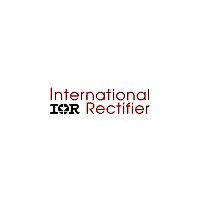IRDC3629 International Rectifier, IRDC3629 Datasheet - Page 13

IRDC3629
Manufacturer Part Number
IRDC3629
Description
BOARD EVAL SYNC BUCK CONTROLLER
Manufacturer
International Rectifier
Power MOSFET Selection
The IR3629A uses two N-Channel MOSFETs per
channel. The selection criteria to meet power
transfer requirements are based on maximum
drain-source voltage (V
voltage (V
resistance R
The MOSFET must have a maximum operating
voltage (V
voltage (V
The gate drive requirement is almost the same
for both MOSFETs. A logic-level transistor can
be used and caution should be taken with
devices at very low gate threshold voltage (V
to
complementary MOSFET, which results in a
shoot-through current.
The total power dissipation for MOSFETs
includes conduction and switching losses. For
the Buck converter the average inductor current
is equal to the DC load current. The conduction
loss is defined as:
The R
considered for the worst case operation. This is
typically given in the MOSFET datasheet. Ensure
that the conduction losses and switching losses
do not exceed the package ratings or violate the
overall thermal budget.
For this design, the IRF6712 is selected for
control FET and IRF6715 is selected for the
synchronous FET. These devices provide low on
resistance in a DirectFET package.
The MOSFETs have the following data:
The conduction losses will be: P
Io=25A. The switching loss is more difficult to
calculate, even though the switching transition is
well understood. The reason is the effect of the
parasitic components and switching times during
the switching procedures such as turn-on / turn-
off delays and rise and fall times. The control
MOSFET contributes to the majority of the
11/29/2007
V
ControlFET
R
ds
ds(on)
=
prevent
25
ϑ
=
P
P
DS(on)
cond
cond
V,Q
3
=
8 .
R
=
=
in
mΩ
ds(on)
g
DSS
(upper
(lower
gs
).
(IRF6712)
=
DS(on)
temperature dependency should be
), maximum output current, On-
12
@
temperatu
) exceeding the maximum input
V
nC
switch)
switch)
undesired
gs
, and thermal management.
=
10
:
re
=
=
V
dependency
I
I
2
load
2
load
DSS
∗
∗
V
SyncFET
R
R
R
ds
ds(on)
ds(on)
ds(on)
), gate-source drive
=
turn-on
∗
25
∗
=
D
(1
V,Q
1
∗
−
3 .
ϑ
(IRF6715)
D)
mΩ
con
g
∗
=
ϑ
=1.05W at
@
40
V
of
nC
gs
:
=
10
the
gs
V
)
switching
converter. The synchronous MOSFET turns on
under zero voltage conditions, therefore, the turn
on losses for synchronous MOSFET can be
neglected. With a linear approximation, the total
switching loss can be expressed as:
Where:
V
t
t
T = Switching period
I
The switching time waveforms is shown in
figure12.
From IRF6712 data sheet:
tr = 11ns
tf = 19ns
These values are taken under a certain test
condition. For more details please refer to the
IRF6712 data sheet.
By using equation (10), we can calculate the
switching losses. P
The reverse recovery loss is also another
contributing factor in control FET switching
losses. This is equivalent to extra current
required to remove the minority charges from the
synchronous FET. The reverse recovery loss can
be expressed as:
r
f
load
= Fall time
= Rise time
ds(off)
= Load current
90%
10%
IR3629/IR3629A MPbF
V
= Drain to source voltage at the off time
V
GS
Fig. 12: switching time waveforms
DS
P
t
sw
d
Q
P
: t
F
losses
(ON)
rr
Qrr
s
=
rr
: Switchin
:
Re
V
Re
=
ds
Q
2
(
verse
verse
off
rr
*t
)
sw
*
rr
*F
t
g Frequen
in
r
=1.35W at Io=25A.
T
s
+
Re
Re
t
t
f
r
cov
cov
*
a
I
load
t
ery Time
ery Ch
d
(OFF)
synchronous
cy
-
- -
(10)
arg
e
t
f
Buck
13











